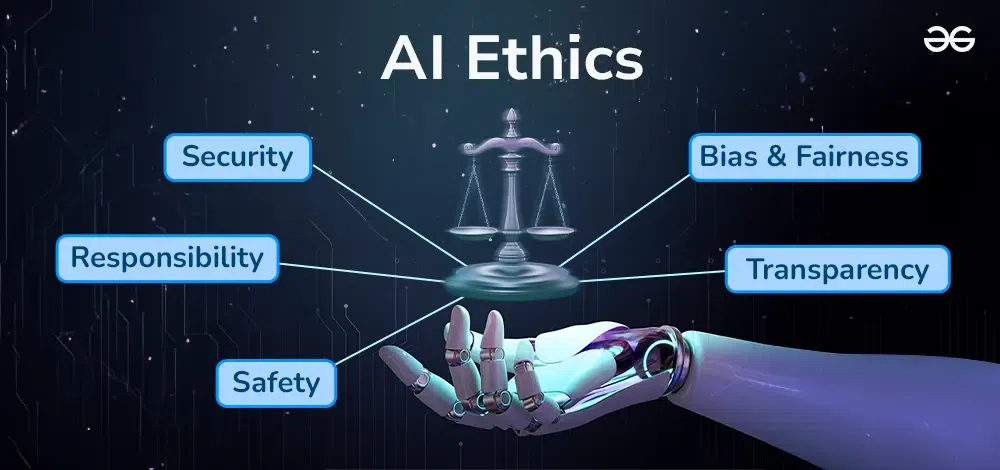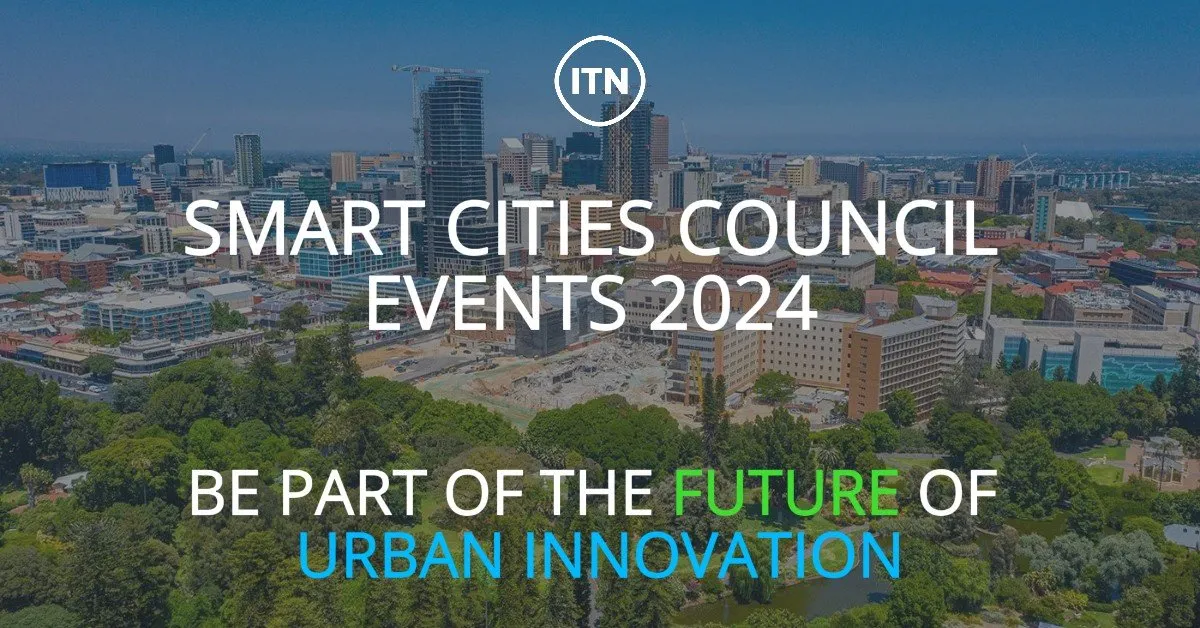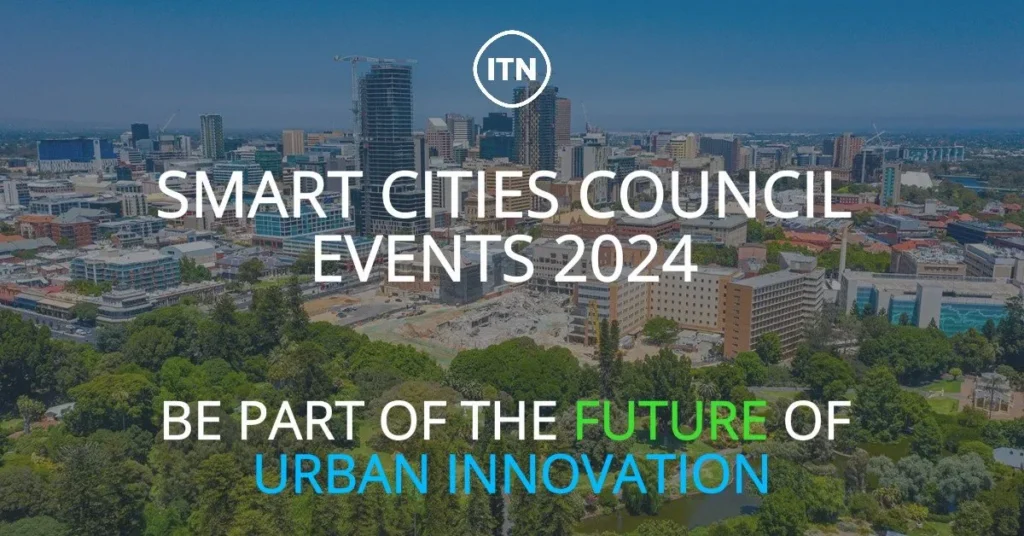Trending
The Ethics of AI: Should We Be Concerned About the Future of Artificial Intelligence?

Artificial Intelligence (AI) has rapidly evolved from a concept of science fiction to a crucial part of our daily lives. From virtual assistants like Siri and Alexa to AI-driven algorithms that power healthcare, finance, and autonomous vehicles, AI is becoming more deeply integrated into society. While the benefits of AI are clear, the growing prevalence of this technology raises important ethical concerns. These concerns are not just theoretical—they have real-world implications for privacy, employment, security, and even human rights.
The Ethics of AI: Should We Be Concerned About the Future of Artificial Intelligence?

The Promise of AI
AI offers a vast range of potential benefits. It can analyze massive datasets to uncover insights that humans might miss, improve efficiency across industries, and even perform tasks that would be too dangerous or tedious for people. For example, in healthcare, AI can help diagnose diseases more accurately and quickly by analyzing medical images and patient data. In transportation, autonomous vehicles could reduce accidents and increase mobility for people with disabilities.
AI also has the potential to revolutionize industries like agriculture, energy, and education. Smart farming systems powered by AI can help monitor crops, predict weather patterns, and optimize resource usage, thereby improving food production. In the energy sector, AI can assist in managing renewable energy grids, optimizing energy consumption, and reducing waste.
However, with this promise comes a set of challenges that go beyond technological limitations. The ethical issues surrounding AI are diverse and complex, requiring careful consideration as we continue to develop and deploy AI technologies.
Ethical Concerns of AI
- Bias and Discrimination
One of the most significant ethical challenges posed by AI is the issue of bias. AI systems are trained on large datasets, and if these datasets contain biased information, the AI will replicate those biases. For instance, AI algorithms used in hiring processes may unfairly favor certain demographic groups over others if the training data reflects historical discrimination. Similarly, facial recognition software has been criticized for its poor performance in recognizing individuals with darker skin tones, raising concerns about racial bias.
The presence of bias in AI can perpetuate inequality and injustice in areas like criminal justice, hiring, and housing, where AI-driven decisions can have life-altering consequences. Addressing this issue requires not only improving the data used to train AI but also ensuring transparency in how algorithms make decisions.
- Privacy Invasion
AI’s ability to process and analyze vast amounts of data presents significant risks to privacy. From social media platforms to smart devices, AI-driven systems collect personal data at an unprecedented scale. While this data can be used to improve services and provide personalized experiences, it also raises concerns about surveillance and the misuse of personal information.
In some countries, AI is already being used in mass surveillance programs that track individuals’ movements, monitor communications, and even predict criminal behavior. The potential for abuse is enormous, especially if these systems fall into the hands of authoritarian governments or unscrupulous corporations. Ensuring that AI respects privacy rights and is subject to robust data protection regulations is critical to preventing its misuse.
- Job Displacement
Another major concern is the impact of AI on the workforce. As AI systems become more capable, there is growing fear that they will replace human workers in various industries, from manufacturing to customer service. Autonomous systems like robots and AI-powered chatbots are already taking over tasks that were once performed by humans, leading to job losses in some sectors.
While AI has the potential to create new jobs—particularly in fields related to AI development, maintenance, and oversight—there is a risk that the pace of technological change will outstrip the ability of workers to adapt. This could exacerbate economic inequality, as lower-skilled workers are disproportionately affected by automation. Governments and businesses must work together to ensure that workers are retrained and that the benefits of AI are shared broadly across society.
- Autonomous Weapons and Security Threats
AI also has significant implications for national security. Autonomous weapons, powered by AI, have the potential to change the nature of warfare. These weapons, once deployed, could make decisions about targeting and killing without human intervention. The development and deployment of such systems raise serious ethical questions about accountability and the potential for unintended consequences.
Moreover, AI poses cybersecurity risks. AI-driven attacks could exploit vulnerabilities in critical infrastructure, financial systems, and even healthcare networks. The speed and scale at which AI could be used to launch cyberattacks make it difficult for humans to respond effectively. Ensuring that AI is developed and used responsibly in the context of national and global security is essential to preventing catastrophic consequences. joyfulroamers.com
The Need for Ethical Guidelines
As AI continues to evolve, it is essential to establish ethical guidelines and regulatory frameworks to address these concerns. Governments, corporations, and international organizations must work together to create policies that promote transparency, accountability, and fairness in the development and use of AI.
One promising initiative is the development of AI ethics frameworks by organizations like the European Union and the United Nations. These frameworks aim to ensure that AI is used in ways that respect human rights, promote fairness, and avoid harm. However, these efforts are still in their early stages, and there is a need for greater collaboration and enforcement to ensure that ethical principles are put into practice.
The Role of AI Developers and Society
While regulations are essential, the responsibility for ensuring that AI is used ethically cannot rest solely with governments. AI developers and companies must also play a critical role in creating systems that prioritize ethical considerations. This includes implementing rigorous testing to identify and eliminate biases, ensuring that AI systems are transparent and explainable, and promoting diversity in the teams that develop AI technologies.
The Ethics of AI: Should We Be Concerned About the Future of Artificial Intelligence?

Furthermore, society as a whole must engage in a broader conversation about the role of AI in our lives. Public awareness and education about AI’s potential and its risks are essential to ensuring that people can make informed decisions about how they interact with AI technologies. As AI becomes more integrated into society, it is vital that we develop a shared understanding of the ethical implications of this technology and work collectively to address them.
Conclusion: Should We Be Concerned?
The future of AI presents both incredible opportunities and significant ethical challenges. While there is much to be optimistic about, we must also be vigilant in addressing the potential risks. Bias, privacy invasion, job displacement, and the development of autonomous weapons are just a few of the concerns that must be addressed as AI continues to evolve.
The question of whether we should be concerned about the future of AI is not a simple yes or no. Rather, it is a call to action. We must ensure that AI is developed and used in ways that benefit all of humanity, not just a select few. By establishing ethical guidelines, promoting transparency, and fostering collaboration between governments, corporations, and society, we can harness the power of AI while minimizing its risks.
The Ethics of AI: Should We Be Concerned About the Future of Artificial Intelligence?
Trending
Is 2024 the Year of the Smart City? Exploring Urban Innovation

The concept of the “smart city” has been circulating for years, promising to revolutionize urban living by integrating technology into the fabric of city infrastructure. With 2024 upon us, are we finally seeing the dawn of widespread urban innovation? The evidence suggests that many cities are on the brink of becoming smarter, more efficient, and more sustainable.
Is 2024 the Year of the Smart City? Exploring Urban Innovation

What Is a Smart City?
A smart city is an urban area that leverages technology to improve infrastructure, enhance public services, and optimize resource management. From traffic control systems that reduce congestion to energy-efficient buildings, the core idea behind smart cities is to use data and technology to make urban environments more livable and sustainable. These technologies often include IoT (Internet of Things) devices, artificial intelligence (AI), big data analytics, and 5G networks.
However, smart cities go beyond just high-tech gadgets. They aim to create urban spaces that are more environmentally conscious, economically vibrant, and socially inclusive. In short, the goal is to enhance the quality of life for citizens through innovative urban planning and technology integration.
The Global Push for Smart Cities
Many governments around the world are investing heavily in smart city initiatives. For instance, cities like Singapore, Copenhagen, and Barcelona are leading the way in implementing intelligent traffic systems, energy-efficient infrastructure, and integrated public transportation. These cities are demonstrating that smart technologies can significantly reduce energy consumption, lower carbon emissions, and improve the overall quality of urban life.
In the U.S., cities like New York, San Francisco, and Austin are also making strides in adopting smart city technologies. Meanwhile, countries like China and India are embarking on ambitious projects to transform their urban centers into technology-driven hubs. In 2024, this global trend is accelerating, with many cities vying to become the next model of urban innovation. joyfulroamers.com
The Key Technologies Driving Smart Cities
Several emerging technologies are at the heart of the smart city movement. Here are some of the most critical innovations:
- IoT Devices and Sensors:
The backbone of smart cities is the Internet of Things (IoT). IoT devices, including sensors and cameras, collect vast amounts of data from various urban systems like traffic, water, waste management, and air quality. This data is then analyzed in real-time to make better-informed decisions. For instance, smart traffic lights can adjust their timing based on real-time traffic flow, reducing congestion and improving road safety. - 5G Connectivity:
A smart city requires a robust and fast communication network to function efficiently. 5G technology offers ultra-fast data transmission speeds, enabling real-time communication between devices. This technology is essential for smart city applications like autonomous vehicles, drone deliveries, and remote healthcare services. - AI and Machine Learning:
Artificial intelligence plays a crucial role in analyzing the data collected by IoT devices. Machine learning algorithms can predict patterns and optimize city operations, from energy consumption to public transportation schedules. AI-driven chatbots are also becoming common in city services, providing residents with instant answers to queries related to municipal services. - Renewable Energy and Smart Grids:
A key feature of many smart cities is their focus on sustainability. Smart grids allow for more efficient energy distribution, reducing waste and integrating renewable energy sources like solar and wind. Energy-efficient buildings that use smart thermostats and lighting systems further reduce power consumption. - Autonomous Transportation:
Smart cities are likely to be the testing ground for autonomous vehicles, drones, and electric scooters. These innovations promise to reduce traffic congestion and emissions while making transportation more accessible. - Blockchain for Security and Efficiency:
Blockchain technology offers a decentralized and secure method of managing city resources. Whether it’s improving transparency in governance or enabling secure transactions for smart city services, blockchain holds immense potential in urban innovation.
The Benefits of Smart Cities
- Improved Quality of Life:
By optimizing traffic flow, reducing pollution, and enhancing public services, smart cities can improve the quality of life for their residents. Citizens can benefit from faster commute times, cleaner air, and more efficient public services. - Environmental Sustainability:
One of the primary goals of smart cities is to reduce the environmental impact of urban living. Smart grids, energy-efficient buildings, and intelligent waste management systems can significantly lower carbon emissions. - Economic Growth:
Smart cities create a fertile environment for innovation and entrepreneurship. They attract startups, tech companies, and investors, boosting the local economy and creating new jobs. - Better Public Services:
From healthcare to education, smart cities can improve the delivery of public services. For example, smart healthcare systems can use AI to predict health trends and manage hospital resources more effectively. - Enhanced Safety and Security:
With technologies like facial recognition, smart surveillance, and AI-powered crime prediction, smart cities can improve public safety. However, this also raises concerns about privacy and surveillance, which need to be addressed.
The Challenges Ahead
Despite the numerous benefits, the path to creating fully operational smart cities is not without its challenges.
- Privacy Concerns:
The extensive use of surveillance and data collection in smart cities raises significant privacy issues. How can cities ensure that personal data is protected while still optimizing services? - Digital Divide:
Not everyone has access to the technologies needed to benefit from smart city innovations. There’s a risk that smart cities could exacerbate inequality if efforts are not made to include underserved communities. - Cybersecurity Risks:
As cities become more connected, they also become more vulnerable to cyberattacks. Ensuring that smart city infrastructure is secure from hacking and data breaches is crucial. - Cost of Implementation:
Building a smart city is expensive. While the long-term benefits may outweigh the costs, the initial investment in technology and infrastructure can be prohibitive for many cities, particularly in developing countries.
Conclusion: Is 2024 the Year of the Smart City?
2024 is shaping up to be a pivotal year for smart cities. While many urban areas are making strides in integrating technology to improve services, sustainability, and quality of life, there is still a long way to go. The challenges of privacy, security, and the digital divide need to be addressed to ensure that smart cities benefit everyone.
Is 2024 the Year of the Smart City? Exploring Urban Innovation

Nevertheless, the rapid advancements in technology and the growing global commitment to sustainability suggest that smart cities are no longer just a futuristic vision—they are becoming a reality. As more cities embrace innovation, 2024 could very well mark the beginning of a new era in urban living.
Is 2024 the Year of the Smart City? Exploring Urban Innovation
Trending
The Future of Education: How Online Learning is Reshaping the Classroom

The traditional classroom model—where students sit in rows, facing a teacher at the front of the room—has undergone a significant transformation in recent years. Online learning, which was once considered a supplementary form of education, is now at the forefront of the future of education. The rise of digital technology, accelerated by the COVID-19 pandemic, has led to an unprecedented shift towards virtual classrooms. As we look ahead, it’s clear that online learning is reshaping education in profound ways.
The Future of Education: How Online Learning is Reshaping the Classroom

The Evolution of Online Learning
Online education has been around for decades, but it has historically been viewed as a less desirable alternative to in-person learning. However, with advancements in technology, online learning platforms have evolved to become highly interactive, engaging, and flexible. From video lectures and live discussions to virtual simulations and collaborative projects, students now have access to a variety of learning experiences that rival, and sometimes surpass, those of the traditional classroom. joyfulroamers.com
The shift became more pronounced during the COVID-19 pandemic, when schools and universities worldwide were forced to adopt online learning models. This transition opened the eyes of educators and students alike to the possibilities of virtual education. Institutions began to realize that online learning is not just a stopgap but a viable long-term solution for a variety of educational challenges.
Flexibility and Accessibility: Breaking Down Barriers
One of the most significant advantages of online learning is its flexibility. Students no longer need to adhere to a rigid schedule or commute to a physical location to receive an education. This is especially beneficial for working adults, parents, or students living in remote areas who may not have access to quality educational institutions. With online learning, education becomes more accessible to a diverse population, breaking down barriers that have traditionally limited opportunities.
Online platforms also provide students with the ability to learn at their own pace. Unlike traditional classrooms, where the pace of learning is often dictated by the teacher, online courses allow students to spend more time on challenging subjects and move quickly through topics they grasp easily. This personalized approach to learning ensures that each student gets the support they need to succeed.
Moreover, online education opens doors to global learning opportunities. Students can enroll in courses from universities and institutions around the world without having to relocate or pay hefty international tuition fees. This global perspective not only enhances the quality of education but also promotes cross-cultural understanding and collaboration.
Technology as a Catalyst for Innovation in Education
The future of education is deeply intertwined with technological innovation. Artificial intelligence (AI), augmented reality (AR), and virtual reality (VR) are rapidly being integrated into online learning platforms, enhancing the educational experience in ways previously unimaginable.
AI-powered tools can provide personalized feedback to students, helping them identify their strengths and areas for improvement. Virtual tutors can offer real-time assistance, and AI-driven analytics can track student progress, allowing educators to tailor instruction to individual learning needs. This level of customization is a far cry from the one-size-fits-all model of traditional classrooms.
AR and VR technologies are also revolutionizing education by creating immersive learning environments. For example, medical students can perform virtual surgeries, history students can take virtual tours of ancient civilizations, and engineering students can manipulate 3D models of complex machinery—all from the comfort of their homes. These interactive, hands-on experiences bridge the gap between theoretical knowledge and practical application, making learning more engaging and effective.
The Role of Teachers in the Online Classroom
While technology plays a crucial role in the future of education, it does not replace the importance of teachers. Instead, it enhances their ability to provide personalized support and mentorship to students. In the online classroom, teachers become facilitators of learning rather than mere distributors of information. They guide students through the learning process, encourage critical thinking, and foster collaboration among peers.
One of the challenges of online learning is maintaining student engagement and motivation. Without the physical presence of a teacher or classmates, some students may struggle with discipline or feel isolated. This is where teachers play an essential role in creating a sense of community within the virtual classroom. Through live discussions, group projects, and interactive activities, teachers can foster a collaborative and supportive learning environment.
Additionally, the rise of online learning has led to a demand for new skill sets among educators. Teachers must now be proficient in using digital tools and platforms, as well as adapting their teaching methods to suit the virtual environment. Continuous professional development and training are essential to ensure that educators can effectively leverage technology to enhance student learning outcomes.
Challenges and Considerations for the Future
Despite the many advantages of online learning, there are still challenges that need to be addressed. One major concern is the digital divide, which refers to the gap between those who have access to reliable internet and digital devices and those who do not. This divide disproportionately affects low-income students and students in rural areas, who may struggle to participate in online learning due to a lack of resources.
Another challenge is ensuring the quality and credibility of online education. As more institutions and platforms offer online courses, there is a need for standardized accreditation processes to ensure that students receive a high-quality education. Additionally, online assessments and examinations must be designed in a way that prevents academic dishonesty and accurately measures student performance.
Finally, the social aspect of education cannot be overlooked. Traditional classrooms provide students with valuable opportunities for social interaction, teamwork, and relationship-building—skills that are essential for success in both personal and professional life. While online learning can offer some opportunities for collaboration, it may not fully replicate the social dynamics of in-person learning. Finding ways to integrate social and emotional learning into online education will be crucial as we move forward.
The Future of Education: How Online Learning is Reshaping the Classroom

Conclusion: A Hybrid Future of Education
The future of education is likely to be a hybrid model that combines the best of both worlds: the flexibility and innovation of online learning with the social interaction and support of traditional classrooms. As technology continues to advance, online education will become more sophisticated, offering students personalized, engaging, and accessible learning experiences.
However, the human element of education will remain essential. Teachers, mentors, and peers will continue to play a crucial role in shaping the learning experience. The classroom may look different in the future, but the goal remains the same: to provide students with the knowledge, skills, and support they need to succeed in an ever-changing world.
Online learning is not just reshaping the classroom; it is redefining what it means to be a student and a teacher in the 21st century.
The Future of Education: How Online Learning is Reshaping the Classroom
Trending
The Pros and Cons of Smart Homes: Is Your Home Ready for Automation?

In today’s fast-paced world, the idea of automating your home for greater convenience and efficiency is becoming increasingly popular. Smart homes, equipped with internet-connected devices, can perform a variety of tasks: control lighting, regulate temperature, manage security systems, and even allow voice-activated commands to control appliances. But while the allure of a fully automated home is strong, is your home truly ready for smart automation? This blog explores the pros and cons of smart homes to help you decide.
The Pros and Cons of Smart Homes: Is Your Home Ready for Automation

What is a Smart Home?
A smart home is a residence that uses internet-connected devices to enable the remote management of systems such as lighting, heating, security, and entertainment. These devices often operate via mobile apps or virtual assistants like Amazon’s Alexa, Google Assistant, or Apple’s Siri. In essence, smart homes are designed to make life easier, more convenient, and more efficient by automating day-to-day tasks and functions.
The Pros of Smart Homes
1. Convenience
One of the most appealing aspects of a smart home is the level of convenience it offers. Imagine being able to adjust the thermostat, lock your doors, or turn off the lights from your smartphone, no matter where you are. For instance, if you’ve left the house and forgotten to turn off the lights, you can simply do so remotely using a smart app.
You can also create customized routines. For example, your lights can gradually brighten as part of your morning routine, or the coffee machine can start brewing your favorite drink as soon as your alarm goes off. This level of control over daily tasks saves both time and effort.
2. Energy Efficiency
Smart homes can also help save energy, which translates to lower utility bills. Smart thermostats like Nest or Ecobee learn your schedule and adjust heating or cooling based on when you’re home or away. Smart lighting systems can be programmed to turn off when no one is in the room or when natural light is adequate. This automation minimizes wasted energy and contributes to a greener, more eco-friendly lifestyle. joyfulroamers.com
3. Improved Security
One of the standout benefits of smart home technology is the improvement in home security. Smart security systems allow you to monitor your home remotely, receive alerts about unusual activity, and even see who’s at your front door using video doorbells. Smart locks allow you to control who enters your home without needing to hand out keys, and you can lock or unlock doors with a tap on your phone.
With features like motion sensors, remote alarms, and automated lights, you can deter burglars by making your home appear occupied even when you’re away. For people who travel frequently or work long hours, this adds an additional layer of peace of mind.
4. Enhanced Comfort
Smart devices can create a more comfortable living environment. Smart speakers or entertainment systems can sync up to provide personalized playlists or adjust lighting for the perfect movie night. Automated blinds can help control sunlight, and smart air purifiers can keep the air in your home clean and comfortable.
Many homeowners enjoy the ability to create their ideal environment with the touch of a button or a voice command.
The Cons of Smart Homes
1. Cost
While smart homes offer numerous benefits, the cost can be a significant barrier to entry. High-quality smart devices aren’t cheap, and outfitting your entire home with automation can require a considerable upfront investment. Smart thermostats, security cameras, locks, lights, and appliances can add up quickly, and while the energy savings may eventually offset some costs, it might take years before you see a return on investment.
Additionally, ongoing costs such as maintenance, device upgrades, or subscription fees for certain services (like cloud storage for video footage) can also add up.
2. Complexity and Learning Curve
Another downside is the learning curve associated with smart technology. Not everyone is tech-savvy, and setting up multiple devices, ensuring they’re compatible, and integrating them into a seamless system can be complicated. Some systems require knowledge of network management, device syncing, and app configurations, which may be overwhelming for certain users.
Moreover, smart devices rely heavily on Wi-Fi. If your internet goes down or experiences frequent outages, your smart devices can lose functionality, leaving you frustrated.
3. Privacy and Security Concerns
As with any internet-connected system, there’s always the potential for hacking. Smart home devices collect a lot of personal data, and if security measures aren’t robust, this data could be vulnerable to cyber-attacks. Hackers could potentially gain control over your devices, invade your privacy, or worse, breach your home security system.
Therefore, it’s essential to invest in strong security measures like two-factor authentication, regularly updating device firmware, and using encrypted networks to safeguard your home.
4. Dependency on Technology
Smart homes also bring a level of dependency on technology that may not appeal to everyone. If you rely on automation for most home functions, a simple power outage or network failure could leave you without control of critical systems. Losing access to basic functions like lighting or temperature control can be inconvenient, and in some cases, technology can malfunction, requiring troubleshooting or repairs.
For some, the idea of relying too heavily on technology for everyday tasks may feel more burdensome than beneficial.
The Pros and Cons of Smart Homes: Is Your Home Ready for Automation

Is Your Home Ready for Automation?
Before jumping into smart home automation, ask yourself whether your home is ready. A few key considerations include:
- Reliable Internet Connection: Smart devices rely on Wi-Fi, so a strong and reliable internet connection is crucial.
- Device Compatibility: Ensure the smart devices you plan to buy are compatible with each other and with your existing systems. A mix of incompatible products can lead to frustration and inefficiency.
- Budget: Factor in the upfront cost of devices as well as ongoing expenses such as maintenance and service subscriptions.
Conclusion
Smart homes represent the future of living, offering convenience, energy savings, enhanced security, and personalized comfort. However, they also come with drawbacks such as cost, complexity, privacy concerns, and reliance on technology. Weighing the pros and cons is essential before deciding if your home is ready for automation. If you value convenience and efficiency and are willing to invest in security, smart home technology can be a worthy addition to your lifestyle. However, those uncomfortable with technology or concerned about privacy may want to adopt a more gradual approach.
The Pros and Cons of Smart Homes: Is Your Home Ready for Automation
-

 Politics6 months ago
Politics6 months agoNarendra Modi’s Heartfelt Connection with Kashi and Maa Ganga
-

 Travel6 months ago
Travel6 months ago6 Essential Travel Tips and Hacks for the Savvy Traveler
-

 Web Stories6 months ago
Web Stories6 months agoTips to Protect Your Smartphone from Getting Hacked
-

 Technology6 months ago
Technology6 months ago6 Essential Tips to Protect Your Smartphone from Getting Hacked
-

 Trending5 months ago
Trending5 months agoGoogle Gemini AI App Debuts in India: How It Operates on Android Devices – Comprehensive Guide
-

 Travel5 months ago
Travel5 months ago6 Budget Travel Without Visa from India: Top Destinations
-

 Travel5 months ago
Travel5 months ago6 Hill Stations in West Bengal That Are Perfect in July
-

 Fitness5 months ago
Fitness5 months ago5-Minute Workouts: Effective Home Exercises



